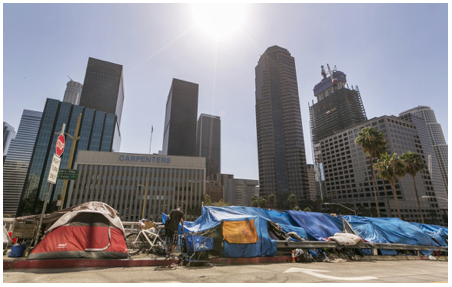DEEGAN ON LA-The parallels are uncannily similar: two different parts of LA, each beginning with an important, historical movie footprint and evolving into a land use bonanza. Century City, once the very busy 20th Century Fox backlot (and before that a ranch belonging to western silent movie icon Tom Mix), became a real estate behemoth studded with skyscrapers, traffic congestion, and high prices. Central Hollywood, once a folksy, low slung neighborhood, is about to be transformed into its own real estate behemoth with the massive proposed Crossroads of the World project. It, too, will be studded with skyscrapers, traffic congestion, and high prices.




































